When we peer into the sky, we peer into the past.
Astronomy, cosmology, and mythology coalesce in this uncommon adaptation of Antoine de Saint-Exupéry’s classic novella, The Little Prince, intended for adult audiences. Part theatre, part art installation, The Object of Constellations is a one-woman performance project designed for and performed in the University of Alberta’s astronomical observatory. This site-specific performance recasts Saint-Exupéry’s European male pilot narrator into a contemporary Canadian astronomer and mother.
Visitors will find the observatory transformed into a world of installation art and performance. They are invited to explore its spaces, and encounter the astronomer as she looks to the night sky in an effort to make sense of life and loss.
The Object of Constellations is presented in partial fulfillment of Christine Lesiak’s Master of Fine Arts, Theatre Practice program, Department of Drama, University of Alberta.
Read the feature article from The Edmonton Journal’s Liz Nicholls.
The Object of Constellations Project Team:
Concept, writer & performer: Christine Lesiak
Director & dramaturge: Suzanne Martin
Stage management: Andrea Murphy
Sound design: Michael Caron with Maryam Zarei
Lighting & co-projection design: Jeff Osterlin
Mechanical designer, builder & co-projection design: Ian Walker
Design consultant: Marissa Kochanski
Science consultant: Dr. Sharon Morsink
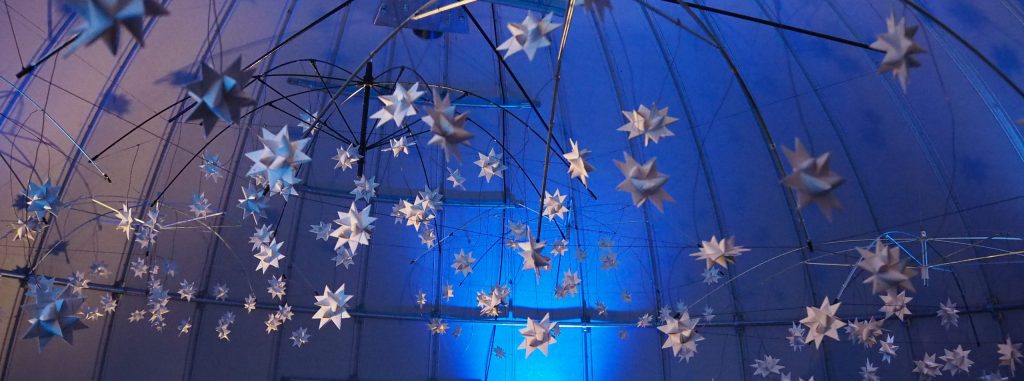
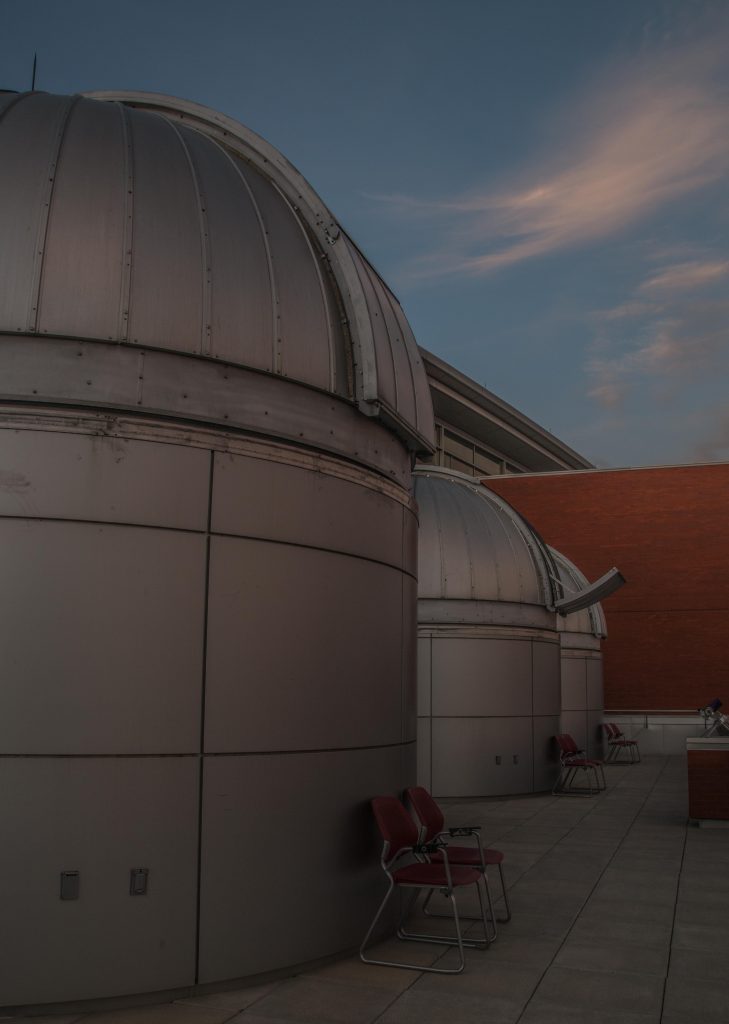

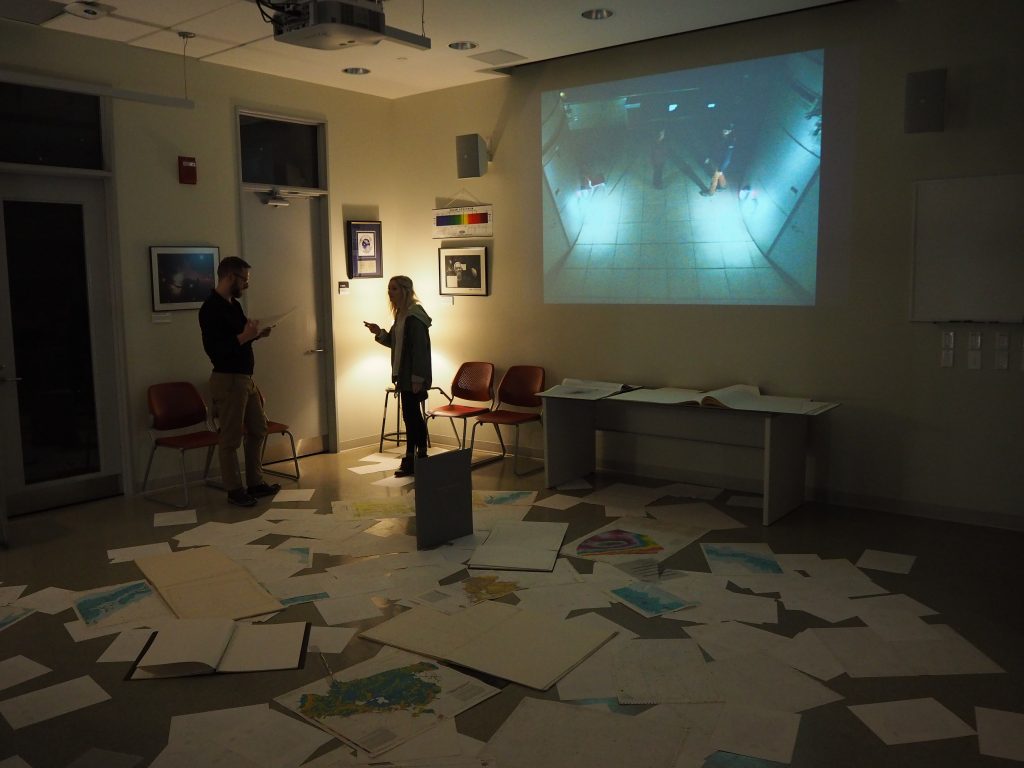
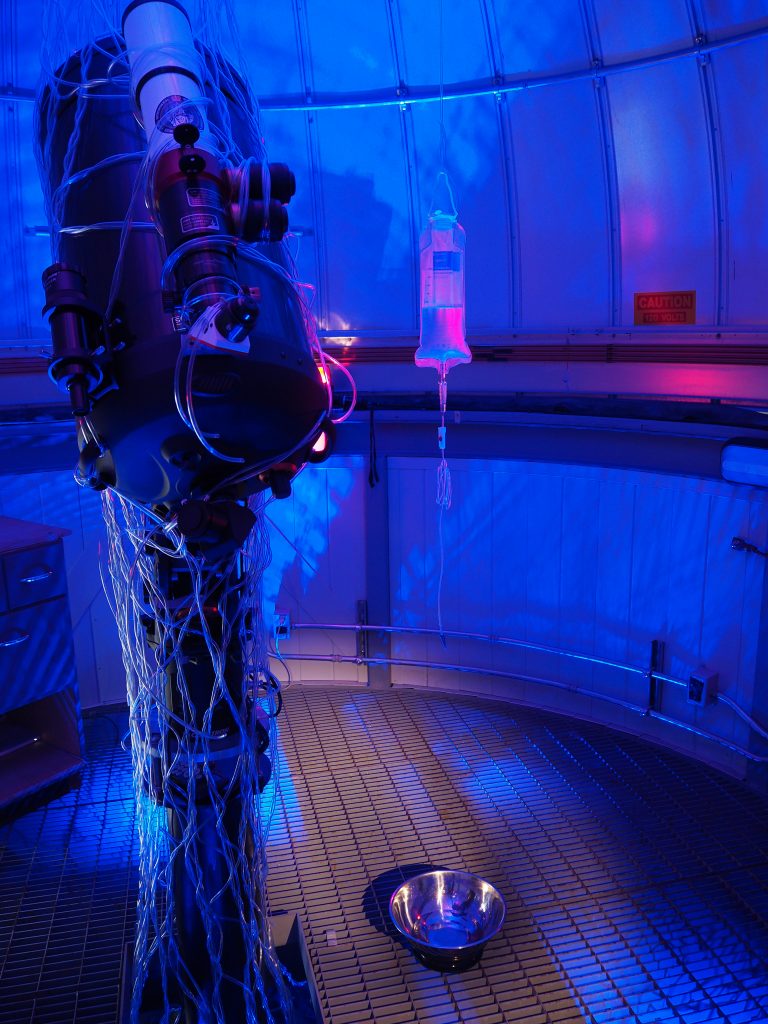
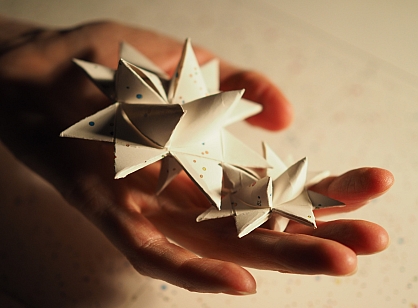
The 2016 performance site
The University of Alberta astronomical observatory consisted of an indoor classroom and large outdoor patio with three metal dome structures. Each dome houses a telescope, and the dome walls are magnetic. The classroom and two domes housed interactive art installation works related to the text. The third (centre) dome housed the live performance. The character was restricted to the live performance dome and the patio, never entering the art installation spaces. Audience entered and exited the observatory facility as they wished, so long as the facility’s maximum capacity (60) was not exceeded. They were encouraged to visit and revisit the art installation spaces in their own time. Twenty audience members were admitted into the live performance space at the beginning of each loop. The loop ran four times nightly, on the half-hour.